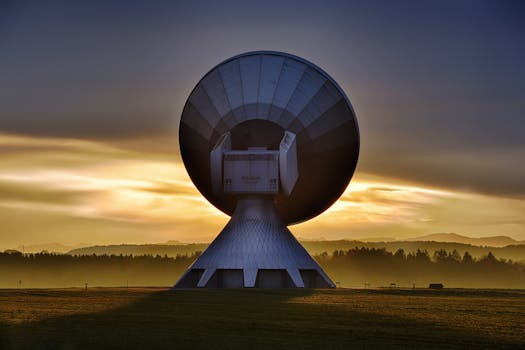
Beyond Earth: How Recent Advances Are Shaping Satellite Telecommunications
Satellite telecommunications, or satcom, has been a crucial component of global communication systems for decades. With the Focus Keyword: Satellite Telecommunications industry experiencing rapid growth, recent advances are shaping the future of space-based communication. In this article, we’ll explore the latest developments and their impact on the industry.
Satellite telecommunications involve the use of artificial satellites in orbit around the Earth to transmit and receive data, voice, and video signals. The technology has come a long way since the launch of the first commercial communications satellite, Intelsat 1, in 1965. Today, satcom plays a vital role in various aspects of modern life, including navigation, weather forecasting, remote sensing, and broadband internet access.
One of the significant recent advances in satellite telecommunications is the development of High-Throughput Satellites (HTS). HTS are designed to provide high-speed internet access to remote and underserved areas, where traditional fiber-optic connectivity is limited or non-existent. These satellites use advanced technologies such as spot beams and frequency reuse to increase capacity and reduce latency.
Another area of advancement is the use of Low Earth Orbit (LEO) satellites. LEO satellites operate at an altitude of around 160-2,000 km, which is much lower than traditional Geostationary Orbit (GEO) satellites. This lower altitude reduces latency and increases the speed of data transmission, making LEO satellites ideal for real-time applications such as video conferencing and online gaming.
Advances in Satellite Technology

Recent advances in satellite technology have enabled the development of smaller, more efficient, and cost-effective satellites. Small satellites, also known as CubeSats, have become increasingly popular in recent years. These tiny satellites weigh less than 1.33 kg and are often launched in large constellations to provide global coverage.
Advances in propulsion systems have also improved the efficiency and lifespan of satellites. Electric propulsion systems, such as ion thrusters, are being used to extend the mission duration of satellites and reduce the amount of fuel required for station-keeping and maneuvering.
The use of advanced materials has also become more prevalent in satellite construction. Lightweight materials such as carbon fiber and aluminum are being used to reduce the mass of satellites, making them more fuel-efficient and cost-effective to launch.
Impact on the Industry

The recent advances in satellite telecommunications are having a significant impact on the industry. The development of HTS and LEO satellites is increasing the availability of high-speed internet access, which is driving growth in the global telecommunications market.
The use of small satellites and advanced propulsion systems is also reducing the cost of access to space, making it more feasible for new companies and countries to participate in the satellite industry. This increased competition is driving innovation and improving the efficiency of satellite operations.
The growth of the satellite industry is also creating new opportunities for satellite-based services, such as Earth observation and navigation. The increasing availability of high-resolution imagery and precise navigation data is enabling new applications in fields such as agriculture, urban planning, and emergency response.
Conclusion

In conclusion, recent advances in satellite telecommunications are shaping the future of space-based communication. The development of HTS, LEO satellites, and small satellites is increasing the availability of high-speed internet access and reducing the cost of access to space.
As the satellite industry continues to evolve, we can expect to see new technologies and applications emerge. The use of advanced materials, propulsion systems, and satellite constellations will further improve the efficiency and effectiveness of satellite operations.
The impact of these advances will be felt across various industries, from telecommunications and navigation to Earth observation and remote sensing. As we look to the future, it’s clear that satellite telecommunications will play an increasingly important role in shaping the world we live in.
See more:





